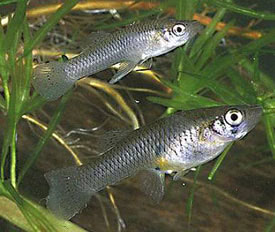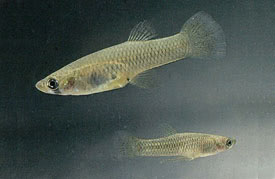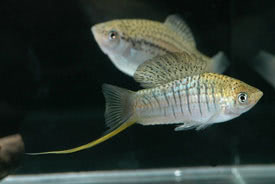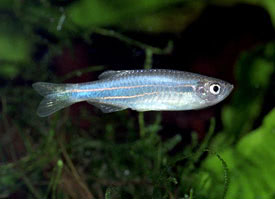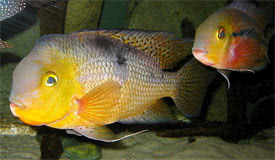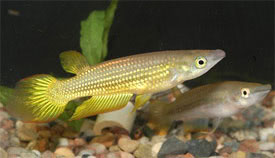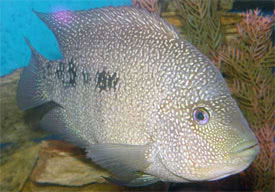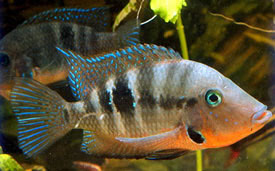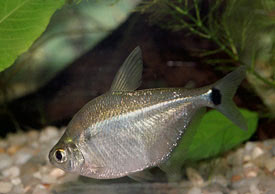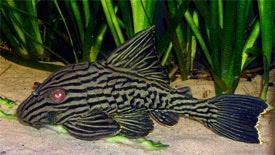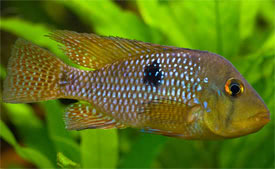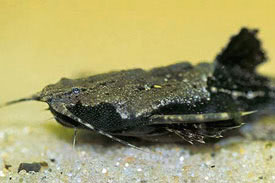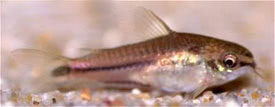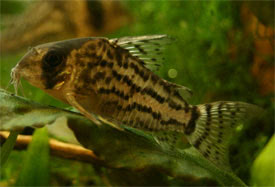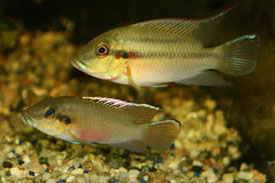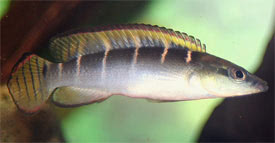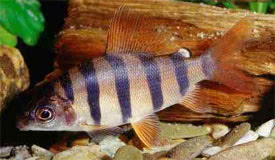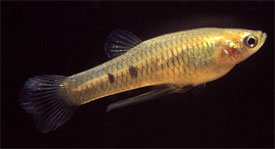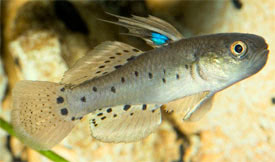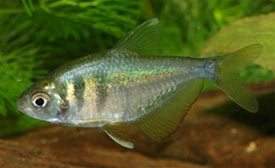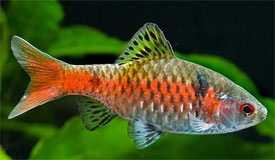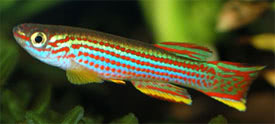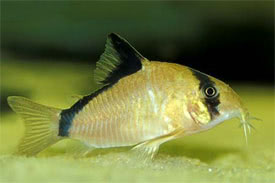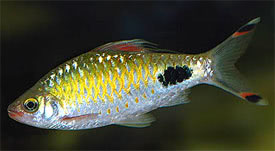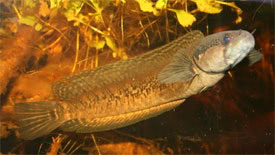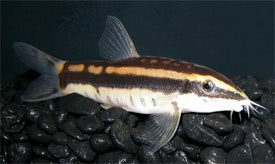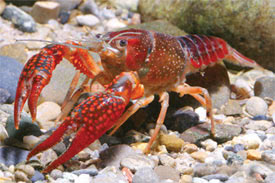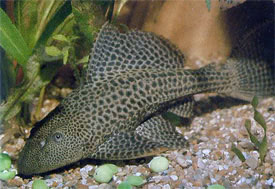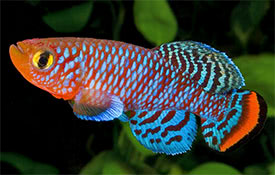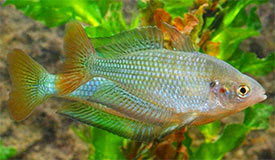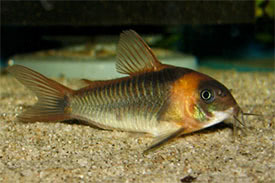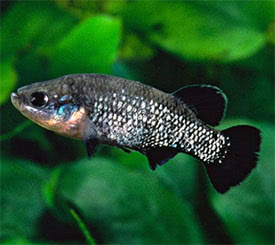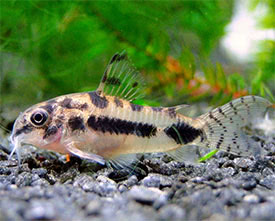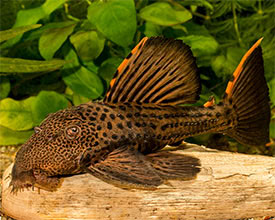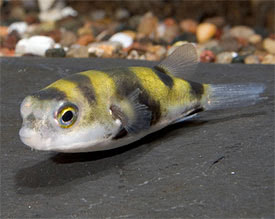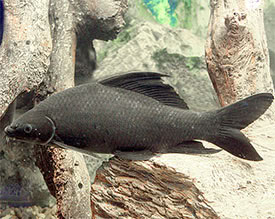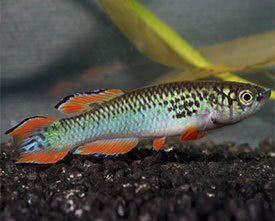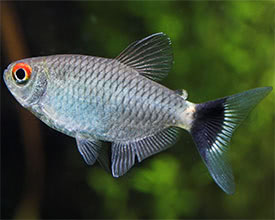- Scientific name: Gambusia affinis
- Common name: Mosquitofish
- Group: Livebearers
- Habitat: North and Central America
- Size: Males:3,5 cm, females:6 cm
- Biotope: Mississippi River basin from central Indiana and Illinois in USA south to Gulf of Mexico and Gulf Slope drainages west to Mexico.
- Social behavior: Agressive, it should be kept in a single species auqarium.
- Diet: Omnivorous
- Breeding: Easy
- Tank: Minimum 30 litres
- Population: 4-5 fish for 35 litres
- Decoration: Best kept in planted tanks with enough free space too swim on. Provide hiding places for pregnant females to give birth and for the fry to hide.
- Temperature: 21-26 °C
- pH: 6-8
- Hardness: 4-19 NK°
- Lifespan: 4 years
Description: It has long been known that they feed readily on the aquatic larval and pupal stages of mosquitoes. They are remarkably hardy, surviving in waters of very low oxygen saturations, high salinities (including twice that of seawater), and high temperatures; they can even survive in waters up to 42 °C for short periods.
The mosquitofish is a small and stout, dull grey, robust fish with a rounded tail and a terminal and upward-pointing mouth adapted for feeding at the water's surface. In these features and their small size they resemble the tropical
guppies, which belong to the same taxonomic family.
he anal fin on adult females resembles the dorsal fin while the anal fin of adult males is pointed. This pointed fin is referred to as a gonopodium and is used to deposit sperm inside the female.
Females can reach sexual maturity in only six to eight weeks, and they may bear three to four broods of young in a single season. The first may number only a dozen, but later broods include 60 to 100 young. Females store sperm in their reproductive tract for up to two months and give birth to live offspring. Live-bearing gives their young a much higher survival rate than in most species of egg-laying fish, which typically suffer from egg predation. Under favourable conditions, mosquitofish live two to three years.

 Magyarul / Hungarian
Magyarul / Hungarian
 Magyarul / Hungarian
Magyarul / Hungarian